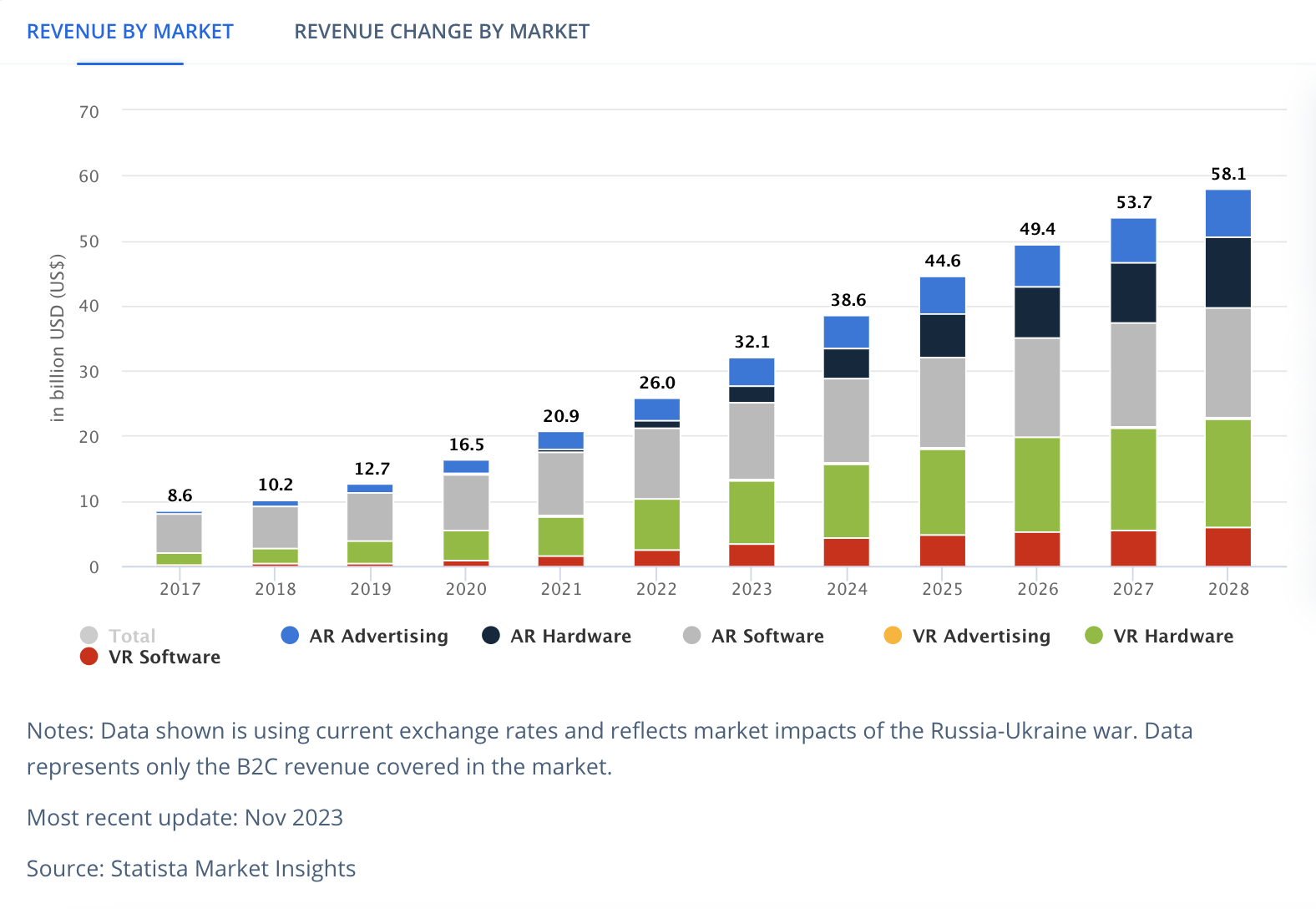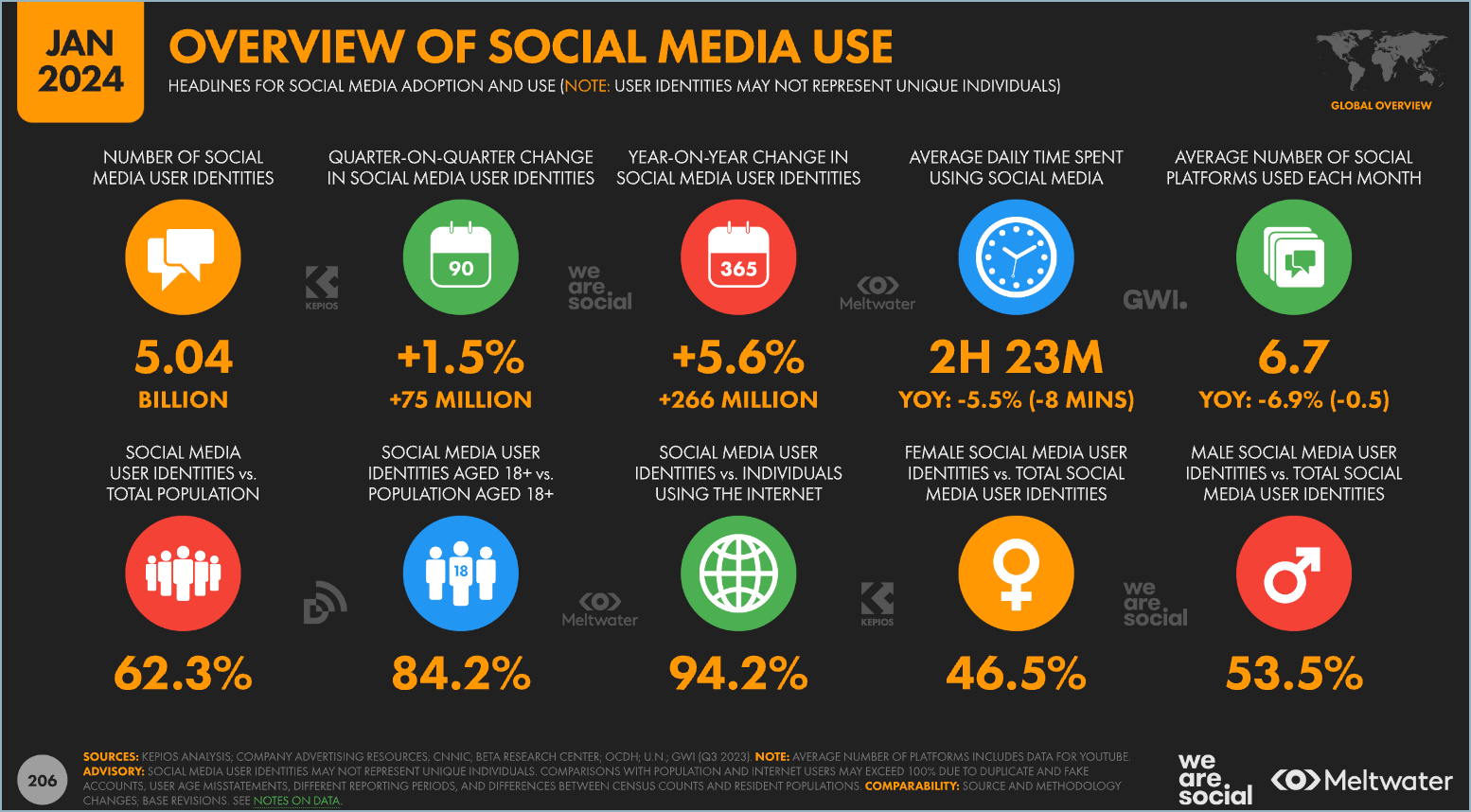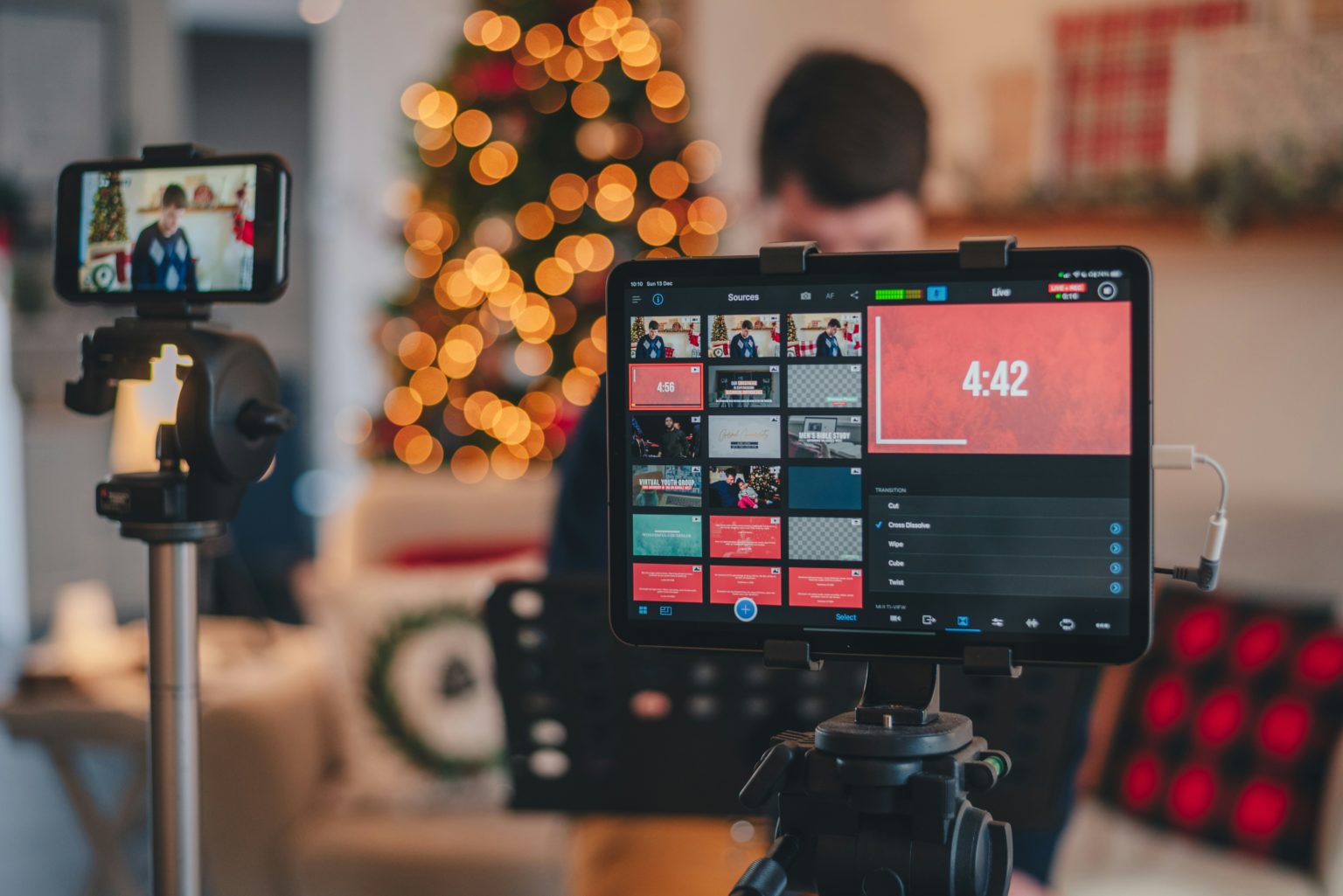In the ever-evolving landscape of the events industry, the convergence of technological innovation and shifting consumer preferences has given rise to a profound transformation—immersing audiences in virtual realms through live streaming.
The dynamic fusion of Virtual Reality (VR) and Augmented Reality (AR), coupled with engaging features like 360-degree videos, real-time interactions, and gamification, has propelled events into uncharted territories. This exploration delves into the current state of immersive live streaming, offering real-time examples and relevant statistics that underscore its profound impact on future events.
As the world witnesses the ascent of virtual experiences, from global conferences in three-dimensional spaces to interactive concerts and trade shows, it becomes evident that live streaming is not merely a trend but a seismic shift reshaping the fabric of event engagement. Let’s embark on a journey through the immersive landscapes that live streaming is creating, understanding how it affects and revolutionizes the events industry.
How is Live Streaming Affecting the Event Industry?
In the ever-evolving landscape of the events industry, the emergence of immersive experiences in live streaming stands out as a transformative force.
Technological advancements, the global shift towards virtual interaction, and changing consumer preferences have propelled the events sector into uncharted territories. This exploration will delve into the various facets of immersive live streaming, examining its current state, real-time examples, and the statistics that underscore its impact on future events.
Virtual Reality (VR) and Augmented Reality (AR) Rise
Virtual Reality and Augmented Reality (AR) technologies have become keystones in the realm of immersive experiences. Statista report shows that the global AR and VR market will generate US$38.6 billion in 2024.

Source: (Statista)
The AR and VR market is projected to grow at 10% CAGR between 2024 and 2028; the market volume is predicted to grow and reach around US$58.1bn by 2028. Virtual events are no longer confined to 2D screens; they are now immersive, three-dimensional spaces where participants can interact in ways previously unimaginable.
Real-time Examples
Virtual Conferences: Platforms like AltspaceVR and vFairs are pioneering the shift towards virtual conferences. These environments allow attendees to explore conference halls, interact with virtual booths, and engage in real-time discussions with fellow participants.
VR Concerts: Artists and event organizers leverage VR to bring live performances directly to audiences. VR concerts provide an intimate and immersive experience, allowing fans to feel as if they are front and center at the concert venue.
360-Degree Video: A Panoramic View of Engagement
360-degree videos has become a staple in the arsenal of immersive live streaming. Studies indicate that 360-degree videos generate 28% higher engagement than traditional videos, emphasizing their effectiveness in capturing and maintaining audience attention. This technology offers viewers a seamless, panoramic view of the event, enabling them to control their perspective and engage more deeply with the content.
Real-time Examples
Live Sports Broadcasting: Major sports events, such as the FIFA World Cup, now incorporate 360-degree cameras to give viewers an immersive experience. Fans can virtually “sit” in different stadium parts, enhancing their connection to the game.
Virtual Campus Tours: Educational institutions utilize 360-degree videos for virtual campus tours. Prospective students can explore campuses as if they were physically present, making informed decisions about their choices.
Real-time Interaction and Social Media Integration
More than 93.5% of internet users use social platforms; hence, using this platform helps boost engagement. The power of social media integration is evident in the increased reach and engagement of virtual events. Events with active social media participation often substantially boost their online presence and attendee engagement.

Source: (SmartInsights)
However, real-time interaction is at the heart of immersive live streaming. Incorporating features like live chat and integrating social media enhances the sense of community and fosters a more engaging experience for virtual attendees.
Real-time Examples
Global Tech Summit: During the latest Global Tech Summit, the event’s hashtag trended globally. The summit’s organizers actively encouraged real-time interactions, resulting in over 100,000 interactions on Twitter alone.
Virtual Networking Lounges: Platforms like Hopin facilitate virtual networking lounges where attendees can connect, replicating the spontaneous interactions at physical events.
Gamification: Making Virtual Participation Entertaining
Gamification has become a crucial element in enhancing virtual participation. Studies show that gamified elements increase participant engagement by up to 68%, underlining the effectiveness of this approach in making virtual events more interactive and enjoyable. Organizers transform passive viewers into active participants by introducing interactive elements such as quizzes, challenges, and rewards.
Real-time Examples
New Age Marketing Conference: This conference successfully employed gamification by integrating interactive quizzes and challenges. Attendees were passive viewers and active contributors, creating a more enjoyable and memorable experience.
Virtual Trade Shows: Gamification in virtual trade shows encourages attendees to explore different virtual booths, participate in challenges, and earn rewards, simulating the interactive nature of physical trade shows.
Personalization: Tailoring Experiences to Individual Tastes
Personalized experiences increase attendee satisfaction, with participants feeling more connected to the event and its content. This approach ensures that virtual events cater to the diverse interests of attendees.
Immersive experiences are increasingly personalized, allowing attendees to tailor virtual event encounters. This personalization enhances engagement and creates a more memorable experience for participants.
Real-time Examples
Wearable Tech Expo: This expo introduced customizable avatars, enabling participants to curate their virtual appearance and environment. Attendees could personalize their virtual presence, fostering a stronger connection to the event.
Personalized Content Tracks: Virtual events often allow attendees to choose from different content tracks, ensuring that they engage with topics that align with their interests and preferences.
Haptic Feedback: Feeling the Virtual Reality
Events incorporating haptic feedback has reported a 40% increase in attendee satisfaction. The ability to feel virtual sensations enhances the overall sense of presence and immersion. Integrating haptic feedback technologies adds a tangible layer to virtual reality, allowing users to feel physical sensations corresponding to virtual events.
Real-time Examples
Gaming Industry: VR controllers in the gaming industry provide tactile feedback, allowing players to feel the impact of in-game actions. This technology enhances the gaming experience, creating a more immersive and realistic environment.
Virtual Medical Training: In the medical field, haptic feedback is used in virtual simulations to give trainees a sense of touch, which is crucial for procedures and surgeries.
The Future is Hybrid: Bridging the Physical and Virtual
The future of events lies in hybrid formats, seamlessly blending in-person and virtual elements. Recent data reveals that 74% of event organizers plan to continue offering virtual components even as in-person events return.
The hybrid model is gaining traction as it ensures inclusivity and widens the reach of events beyond geographical constraints. This approach caters to a broader audience, providing flexibility and accessibility while maintaining a sense of community for physical and virtual attendees.
Real-time Examples
Hybrid Conferences: Organizations are increasingly adopting hybrid conference formats, allowing participants to choose between attending physically or virtually. This flexibility accommodates diverse preferences and extends the reach of the event.
Virtual Expo Booths: Even in physical trade shows, virtual expo booths offer an additional layer of engagement for those unable to attend in person. Attendees can explore booths, participate in virtual demos, and interact with exhibitors remotely.
Monetization Opportunities: Turning Engagement into Revenue
Immersive live streaming enhances engagement and opens up new avenues for monetization within the events industry. Event organizers can leverage various strategies to generate revenue and ensure the sustainability of immersive events.
Ticket Sales for Virtual Access
Virtual events can be monetized through ticket sales for virtual access. Attendees can purchase tickets to access the live-streamed content, exclusive virtual sessions, and interactive features. Offering tiered pricing with different access levels enhances the value proposition for attendees.
Sponsorship and Advertising Opportunities
Immersive live streaming provides unique opportunities for sponsors and advertisers to reach a global audience. Virtual event spaces can incorporate sponsored booths, banners, and interactive ads. Sponsors may also be integrated into the virtual experience, creating a seamless and non-intrusive advertising environment.
Exclusive Content and Premium Packages
Event organizers can create premium packages that offer exclusive content, virtual meet-and-greets with speakers or performers, and behind-the-scenes access. These premium packages can be monetized at a higher price point, providing additional value to those seeking a more exclusive and personalized experience.
Virtual Merchandise and Swag
Just like physical events, virtual events can offer merchandise and swag to attendees. Virtual merchandise booths can sell branded merchandise, digital products, or event-related items. Attendees can purchase these items to commemorate their virtual event experience.
Technical Performance Monitoring
Monitoring the technical performance of live-streaming events is essential for ensuring a seamless experience. Analytics tools integrated into an app like Eventbrite can track metrics such as buffering rates, video quality, and overall platform stability. This information helps organizers identify and address technical issues impacting the viewer experience.
Pay-per-view and On-Demand Access
Organisations can implement pay-per-view models or offer on-demand access for events with high-demand content. This allows attendees to pay for access to specific sessions, keynotes, or workshops, providing a flexible and convenient option for those unable to attend live.
Data Analytics: Enhancing Future Events Through Insights
The immersive nature of live streaming in the events industry generates a wealth of data that can be analyzed to glean valuable insights. Event organizers can leverage data analytics to understand attendee behavior, preferences, and engagement patterns, ultimately improving future events.
Tracking Attendee Engagement
Analytics tools can track various aspects of attendee engagement during virtual events. This includes monitoring participation in live chat, interaction with polls and quizzes, and the time spent in different virtual event spaces. Analyzing these metrics provides insights into what content resonates most with the audience.
Content Effectiveness and Popularity
By analyzing viewership data, organizers can determine the popularity of different sessions, speakers, or types of content. This information helps refine future event agendas, ensuring organizers prioritize topics and formats that resonate with their audience.
Audience Demographics
Understanding the demographics of virtual attendees is crucial for tailoring content and marketing strategies. Analytics can provide insights into participants’ geographical location, professional backgrounds, and other demographic information, allowing organizers to create more targeted and relevant events.
Conclusion: Navigating the Evolving Landscape
Immersive experiences in live streaming is not a fleeting trend anymore; they represent a fundamental shift in how we conceive and execute events. From virtual reality that transports attendees into new dimensions to gamification strategies that transform passive viewers into active participants, the future of live streaming in the events industry is both dynamic and promising.
As we navigate this evolving landscape, event organizers must stay attuned to emerging technologies, embrace the hybrid model that bridges physical and virtual realms, and leverage data analytics to enhance the attendee experience continually. The potential for monetization through innovative strategies further solidifies immersive live streaming as a sustainable and lucrative avenue for the events industry.
In the coming years, we can anticipate even more groundbreaking developments, pushing the boundaries of what is possible in virtual event experiences. Whether you’re an event organizer, a tech enthusiast, or an avid attendee, the future of live streaming in the events industry promises a tapestry of immersive and unforgettable experiences. Embrace the journey, for the future is now and is immersive.
